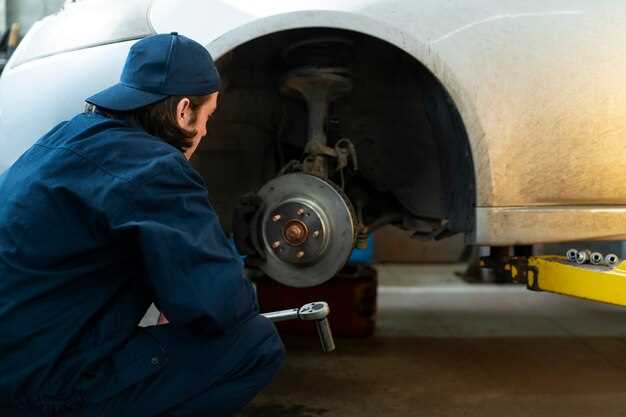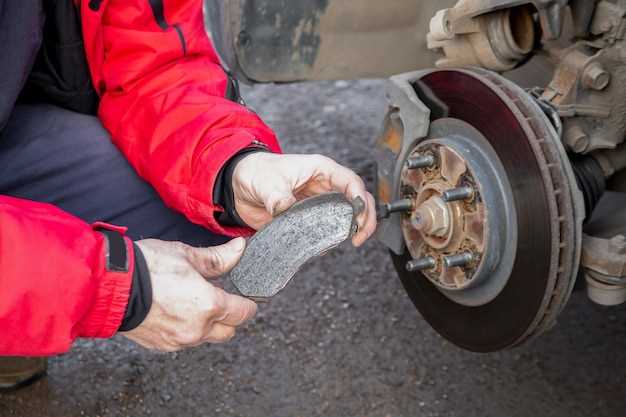
When it comes to enhancing your vehicle’s performance, upgrading to performance brake pads is a critical step, especially for those engaged in aggressive driving or participating in racing events. Standard brake pads often struggle to keep pace with the demands of high-speed driving, leading to decreased stopping power and potential safety hazards. By installing specialized pads designed for race conditions, you ensure that your vehicle can handle the rigors of intense acceleration and rapid deceleration.
Performance brake pads are crafted from advanced materials that offer superior heat resistance and reduced fade, which are essential when pushing your car to its limits. These pads enhance braking efficiency, allowing for shorter stopping distances even under extreme conditions. The choice of pads directly impacts your driving experience, as high-quality options provide not only performance improvements but also greater endurance during prolonged use.
In this article, we will explore the key aspects of selecting and installing performance brake pads specific to aggressive driving scenarios. From understanding the differences between various brake pad formulations to a step-by-step guide on installation, you’ll be equipped with the knowledge necessary to make informed decisions for your vehicle’s braking system.
Selecting the Right Brake Pads for Race Conditions
Choosing the appropriate brake pads for race conditions is critical for achieving optimal performance and safety on the track. In high-stress environments where rapid deceleration is necessary, the right brake pads can significantly influence lap times and overall vehicle handling.
First, consider the type of brake material. Track-focused pads are typically made from advanced compounds, such as ceramic or metal-infused materials, which offer superior heat resistance and consistent performance under extreme conditions. The choice between these materials heavily depends on the specific race format and track surface. Ceramic pads might provide less dust but can wear out faster in extreme settings, while metal-based pads often deliver better performance over longer distances.
Next, evaluate the friction coefficient. For aggressive driving, pads with a higher friction coefficient are preferable, as they provide more stopping power and better modulation. Clients frequently select pads designed for racing to ensure they can maintain high speeds without compromising reliability when braking hard into corners.
Consider the operating temperature range of the brake pads. Race conditions generate substantial heat; therefore, it’s essential to select pads that perform efficiently at elevated temperatures. Look for pads that are designed to operate within the optimal temperature range for the type of racing you are engaging in, ensuring they do not fade during critical moments on the track.
Another factor to take into account is the bedding procedure. Properly prepping the brake pads is vital for achieving full performance from the start. This process involves heating up the pads and rotors in intervals, allowing the material to adhere correctly and form a layer on the rotor surface. Such prep establishes a solid foundation for consistent braking and enhances overall performance during race conditions.
Lastly, pay attention to the compatibility with your existing braking system. Ensure the selected pads are designed to work seamlessly with your brake calipers and rotors to maximize efficiency and reduce the risk of system failure. Proper fitment guarantees smoother operation and compatibility with your vehicle’s dynamics.
In conclusion, selecting the right brake pads for race conditions involves careful consideration of material, friction performance, temperature range, bedding procedures, and compatibility. With the right choice, you set yourself up for a more controlled, powerful driving experience on the racetrack.
Step-by-Step Installation Process for Performance Brake Pads

Installing performance brake pads requires meticulous attention to detail to ensure optimal performance during aggressive driving. Here’s a comprehensive guide to help you through the installation process:
Step 1: Gather Necessary Tools and Materials
Before starting, gather all necessary tools: a socket set, torque wrench, brake cleaner, and a c-clamp. Ensure you have the new performance brake pads ready for the installation.
Step 2: Prepare the Vehicle
Park the car on a flat surface and engage the parking brake. Loosen the lug nuts on the wheels where you plan to install the pads before lifting the vehicle with a jack. Secure it on jack stands for safety.
Step 3: Remove the Wheel
Once the vehicle is secure, remove the lug nuts completely and take off the wheel to expose the brake caliper.
Step 4: Remove the Brake Caliper
Locate the caliper mounting bolts and remove them using your socket set. Carefully slide the caliper off the rotor. Avoid stressing the brake line by supporting the caliper with a bungee cord or similar tool.
Step 5: Prepare the Brake Rotor
Inspect the rotor for wear. If necessary, clean it using brake cleaner. Ensure it is free of any dust or grease. If the rotor is excessively worn, consider replacing it before installing new pads.
Step 6: Install the Performance Brake Pads
Remove the old pads from the caliper bracket and insert the new performance brake pads. Ensure they are seated properly in their designated slots. The backing plate should be flush against the caliper bracket.
Step 7: Compress the Brake Piston
To fit the new, thicker pads, use a c-clamp to gently compress the brake piston back into the caliper housing. This step is crucial for ensuring proper installation.
Step 8: Reattach the Brake Caliper
Once the piston is compressed, slide the caliper back over the rotor and the new pads. Reinstall the caliper mounting bolts and tighten them to the manufacturer’s specified torque settings.
Step 9: Reinstall the Wheel
Place the wheel back onto the hub, hand-tightening the lug nuts first. Lower the vehicle back to the ground and then fully tighten the lug nuts in a crisscross pattern to ensure even clamping.
Step 10: Test the Brakes
Before driving, pump the brake pedal several times to ensure the pads seat correctly against the rotor. This step is essential for restoring brake feel and effectiveness.
Step 11: Conduct a Test Drive
Take your vehicle for a short test drive, gradually applying the brakes to allow the new pads to bed in properly. Monitor for any unusual noises or vibrations during this initial drive.
Following these steps will help you successfully install performance brake pads, enhancing your vehicle’s braking capabilities for an aggressive driving experience.
Testing and Adjusting Brake Performance After Installation

After the installation of performance brake pads, it is crucial to conduct thorough testing to ensure optimal brake performance, especially for aggressive driving or racing scenarios. Start by preparing your vehicle for a test run. Ensure that all components are properly secured and that there are no signs of leaks or installation issues. Check the brake fluid level and inspect the brake lines for integrity.
Begin the testing process in a controlled environment. Find a safe, closed area where you can evaluate the brakes under varying conditions. Start with gentle braking to allow the new pads to bed in properly, which is vital for achieving the desired braking efficiency. Gradually increase speed and apply the brakes more aggressively. Pay attention to the brake response, pedal feel, and performance consistency during these maneuvers.
If the brake performance is not up to expectations, adjustments may be necessary. Consider the alignment of calipers and ensure the pads are seated correctly. It may also be beneficial to experiment with different brake fluid options to enhance performance further. If racing is your goal, fine-tuning the brake balance and modulation should be a priority, ensuring that the installation meets the specific demands of aggressive driving.
Document the results of each test run. Note any issues encountered, such as fade or inconsistency in braking power. This information will be invaluable for making the necessary adjustments to achieve peak performance. Continuous testing and modifications will help in honing the setup, ensuring that your brakes are not just adequate but fully optimized for the rigors of track racing and aggressive driving.




